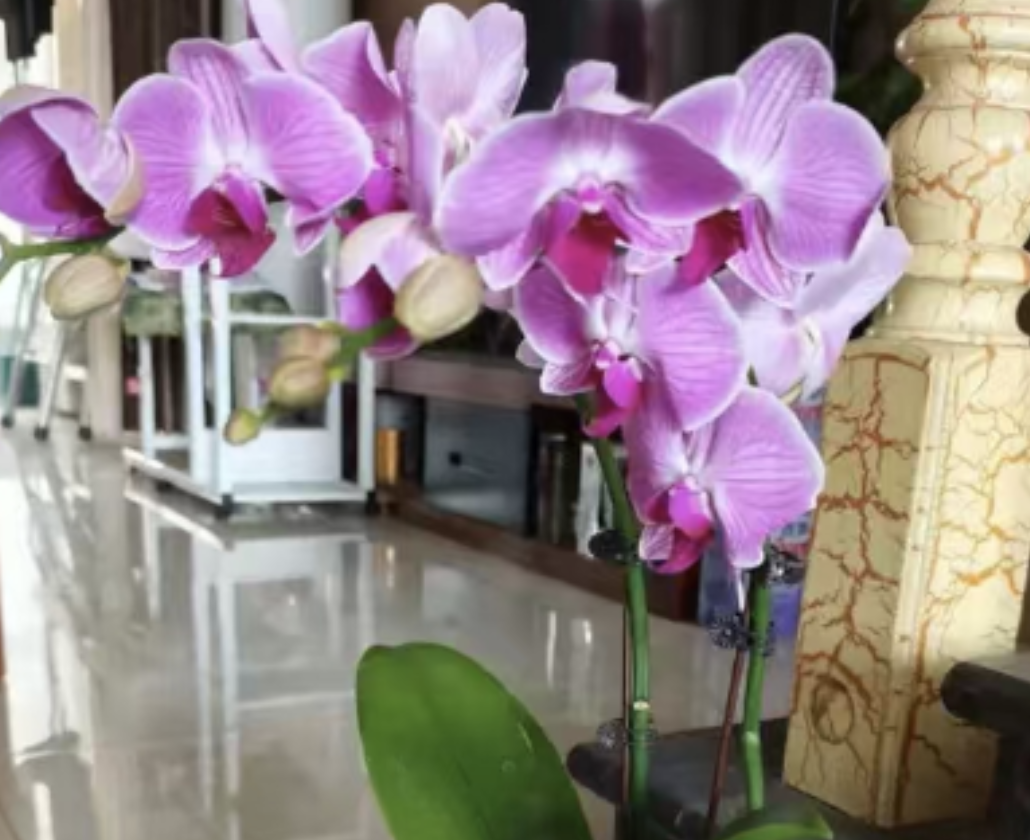As a beautiful ornamental plant, the cultivation and management of Phalaenopsis orchids are of crucial importance. Repotting is an indispensable part of the growth process of Phalaenopsis orchids. It is not only related to the healthy growth of the plants but also directly affects their ornamental value. So, why do Phalaenopsis orchids need to be repotted? And when is the best time for repotting?
The roots of Phalaenopsis orchids have extremely high requirements for air permeability. As the cultivation time passes, the substrates in the pot (such as sphagnum moss, bark, etc.) will gradually age and the air permeability will become worse. This will not only affect the normal respiration of the roots but may also cause the roots to grow out of the pot. In severe cases, it can lead to root rot, resulting in the decline of the plant's growth or even its death. Therefore, regularly replacing the fresh cultivation substrates is vital for the growth of Phalaenopsis orchids.
The roots of Phalaenopsis orchids will continuously expand during the growth process. If the pot is too small, it will limit the growth space of the roots and then affect the overall growth of the plant. At this time, repotting and choosing a slightly larger pot can provide more sufficient growth space for the roots of Phalaenopsis orchids, which is beneficial to their healthy growth.
Using the same pot and substrate for a long time is prone to breeding germs and pests. Through repotting, the old substrate and pot can be thoroughly cleaned up to reduce the breeding of pests and diseases and provide a healthier and safer growth environment for Phalaenopsis orchids.
The best time for repotting Phalaenopsis orchids is usually from the end of spring to the beginning of summer, approximately between May and June. During this period, the air temperature is stably above 20°C, and the humidity is also relatively high, which is very favorable for the growth and recovery of Phalaenopsis orchids.
At this time, the temperature is moderate, neither too hot nor too cold, which is conducive to the growth and recovery of the roots of Phalaenopsis orchids. The relatively high humidity helps Phalaenopsis orchids quickly adapt to the new environment and reduces the stress response after repotting. From the end of spring to the beginning of summer is the peak growth season of Phalaenopsis orchids. After repotting, they can quickly resume growth and enhance their ornamental value.
Precautions for Repotting
The size of the new pot should be moderate, neither too large nor too small, to avoid waterlogging or affecting the growth space. Choose clean, breathable, and well-drained substrates, such as fresh sphagnum moss, bark, etc. During the process of removing the plant from the old pot and potting it into the new one, careful operation is required to avoid damaging the roots of Phalaenopsis orchids. When pruning the roots, use sharp scissors and ensure that the cut ends are smooth. The Phalaenopsis orchids after repotting need a period of adaptation. At this time, the maintenance and management should be strengthened to keep the appropriate temperature, humidity, and light conditions, and avoid operations such as fertilizing and exposing to strong sunlight.
Phalaenopsis orchids need to be repotted to maintain their healthy growth and ornamental value. Repotting them from the end of spring to the beginning of summer can ensure that Phalaenopsis orchids can quickly adapt to the new environment and continue to thrive after repotting.
Why Do Phalaenopsis Orchids Need to Be Repotted?

Share with
Tagged in :




Leave a Reply